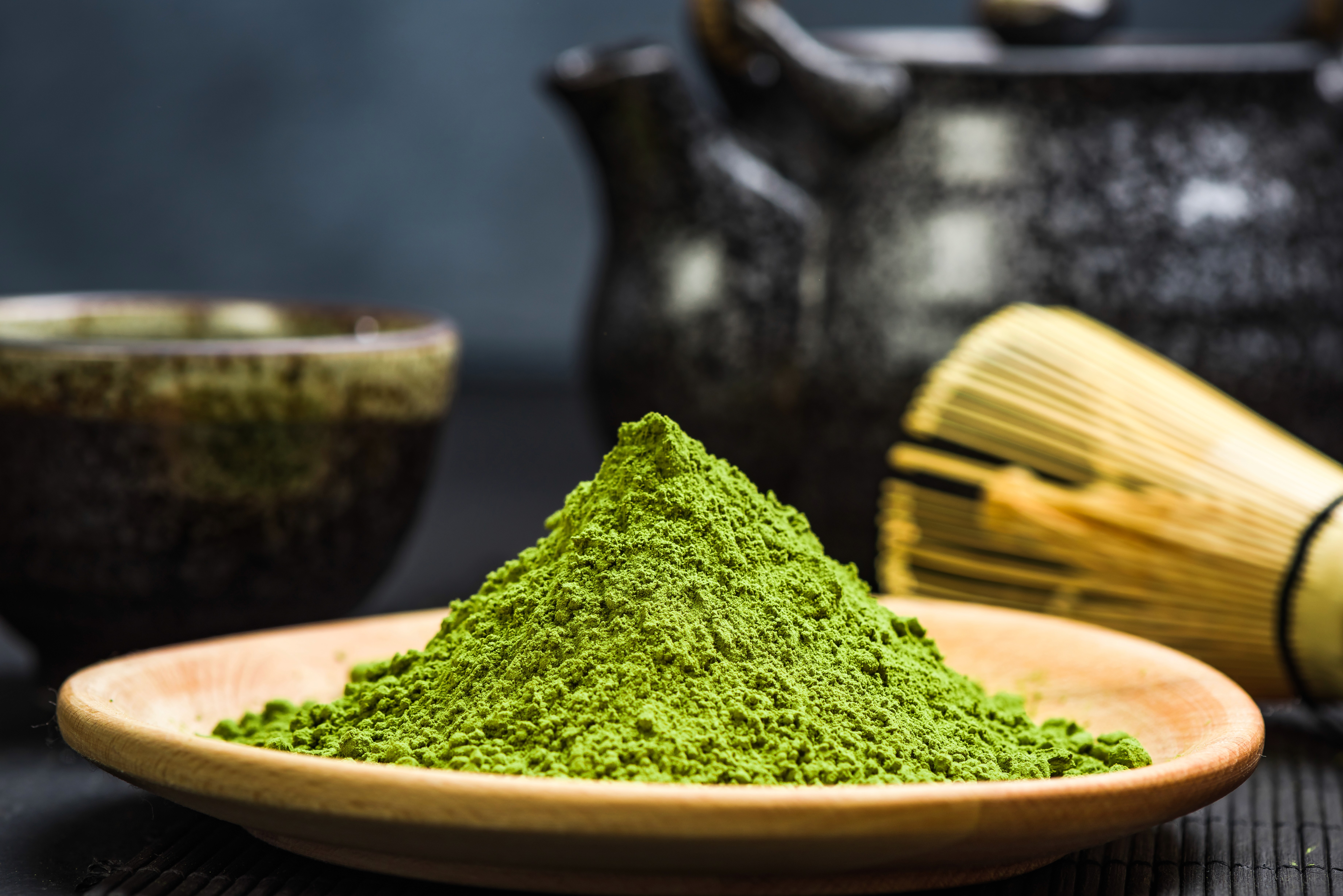Jul 14, 2025
What Is Matcha?
Matcha is a fine, bright-green powder made from ground, shade-grown green tea leaves. Unlike steeped tea, where leaves are discarded, matcha is whisked into water or milk, allowing you to consume the entire tea leaf and benefit from its full nutrient profile.
Because the leaves are grown in the shade before harvest, matcha is higher in chlorophyll, L-theanine, and antioxidants - giving it a vivid green color, rich umami taste, and sustained energy without jitters.
A Brief History of Matcha
Matcha originated in China during the Tang Dynasty, where tea leaves were steamed and formed into bricks. By the 12th century, Zen monk Eisai brought tea seeds and the method of powdered tea to Japan. Over centuries, the Japanese elevated matcha into a ritual - especially through the Uji region, Japan’s premium matcha-producing area.
By the late 20th century, matcha evolved into a global phenomenon, appearing in lattes, desserts, and beauty products. Today, it's a symbol of wellness, culture, and functional energy.
Matcha Grades Explained: Ceremonial vs Premium vs Culinary

Let’s keep it simple. At the core, there are really just two main types of matcha - ceremonial and culinary. Everything else you see on the market is essentially a variation, blend, or in-betweener crafted to fit different price points or purposes.
Ceremonial Grade Matcha
Ceremonial matcha is the highest quality. It’s made from the youngest, most tender leaves picked in the early spring. These leaves are carefully shaded, hand-picked, and stone-ground into a fine, vibrant green powder. The result? A smooth, naturally sweet taste with zero bitterness. This is the matcha you drink pure, whisked into hot water. No milk, no sugar, no distractions. It’s rich, umami, and feels like a moment of stillness in a cup. Think meditation, ritual, mindfulness.
It’s also the most expensive, and for good reason. You’re paying for quality, purity, and flavor that speaks for itself.
Culinary Grade Matcha
On the other end of the spectrum, you’ve got culinary matcha. This is the more robust, practical version of matcha made for mixing. It’s harvested later in the season from more mature leaves, which gives it a stronger, more bitter flavor that holds up well when combined with other ingredients — like milk, sugar, or flour.
This is the matcha you’ll want for:
Smoothies
Baking
Ice cream
Energy bars
Vending powders
Basically, anywhere matcha plays a supporting role instead of taking center stage. It’s affordable, effective, and easy to work with in high-volume settings like cafés, bakeries, and food production.
But What About “Premium” Grade Matcha?
Here’s the honest truth. The term premium grade isn’t a strict classification - it’s more of a middle ground created by the market. As matcha’s popularity grew, so did the demand for something that’s not quite ceremonial, but not as bold or bitter as culinary either.
Premium matcha is what many cafés use for lattes - it’s smooth enough to enjoy on its own if needed, but still affordable for everyday use. It blends well with milk, keeps its green color, and has a more refined flavor than typical culinary matcha. You could say it’s the sweet spot for daily drinkers and baristas who want both quality and practicality.
In reality, every supplier has their own way of defining “premium,” so if you're shopping for matcha and see this term, always ask for a sample or see how it’s intended to be used.
So… Which Matcha Is Right for You?
Let’s be real - matcha is more than just a pretty green powder.
Yes, color can tell you a lot (bright green usually means high quality), but that’s just part of the story. Flavor, aroma, texture, how it’s grown, when it’s harvested - all of these matter. And they directly shape how your matcha will taste, blend, and feel.
Need more help on choosing the right Matcha? 👉 Read this blog
Proven Health Benefits of Matcha
One of the main reasons behind matcha’s popularity is its impressive health profile. Consumed regularly, matcha offers:
Sustained energy without the crash
Thanks to the combination of natural caffeine and L-theanine, matcha delivers focused energy without the jitters associated with coffee.
High antioxidant content
Matcha contains up to 137 times more EGCG (a powerful antioxidant Epigallocatechin gallate) than traditional green tea. This supports cellular health and longevity.
Cognitive performance
L-theanine boosts alpha brain waves, enhancing concentration, memory, and mental clarity.
Metabolism support
EGCG and caffeine may help with fat oxidation, making matcha a favorite in functional beverages.
Immunity and detoxification
Chlorophyll and catechins in matcha support immune defense and natural detox processes.
These benefits make matcha an ideal ingredient for cafés, wellness brands, and functional product developers looking to offer more than just flavor.
Conclusion
At the end of the day, matcha isn’t just a green powder - it’s a reflection of how it’s grown, harvested, and handled. While color is a quick visual cue (and yes, a vibrant green often signals quality), it’s not the whole picture.
What really defines great matcha?
The taste. The aroma. The texture.
Was it hand-picked or machine-harvested? Shade-grown or not? When was it harvested - early spring or late summer? These small details create the big difference between bitter and smooth, dull and vibrant, forgettable and unforgettable.
Whether you're a café owner, wellness brand, or just someone who wants a better morning ritual - the right matcha can elevate your offering and your experience.
If you want matcha that’s clean, rich, and consistently performs - we’ve sourced, tested, and perfected blends for every need.
Browse our collection to find the matcha that fits your ritual, recipe, or brand.

